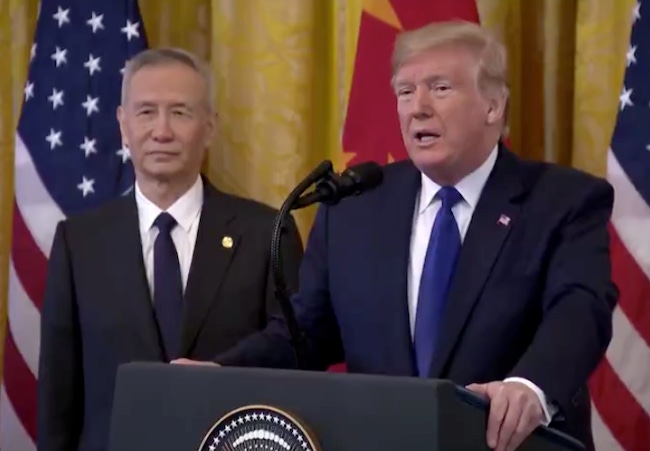“We hope [the deal] paves the way forward for a reduction, or elimination, in tariffs; an increase in market access; and a less adversarial relationship between the world’s two largest economies,” said Plastics Industry Association President and CEO Tony Radoszewski.
January 15, 2020

The Plastics Industry Association (PLASTICS; Washington, DC) wasted no time in applauding the signing of phase one of a trade deal with China, calling the agreement a “step in the right direction.” The signing ceremony between President Trump and Chinese Vice Premier Liu He took place at the White House today.
“We hope [the deal] paves the way forward for a reduction, or elimination, in tariffs; an increase in market access; and a less adversarial relationship between the world’s two largest economies,” said PLASTICS President and CEO Tony Radoszewski. “The plastics industry is an important driver of global growth and it relies on free, stable trade relationships in order to innovate and employ more workers. We look forward to further negotiations that level the playing field for U.S. plastics companies to compete in global trade,” said Radoszewski in a prepared statement.A top-line item in the deal is a pledge from Beijing to more than double its purchases from U.S. farmers in the first year. “China has promised to buy an additional $12.5 billion in U.S. agricultural products in year one, and then $19.5 billion in year two,” reported CNN. “Those commitments come atop roughly $24 billion in farm purchases that China made in 2017, before the trade war started.”
In the eight-part agreement, China agreed to increase overall U.S imports by about $200 billion over two years, according to the Wall Street Journal. That includes a commitment to increase imports of manufactured goods by a little over $30 million in 2020 and approximately $45 million in 2021, said the WSJ. For its part, the United States agreed to cut in half existing tariffs on $120 billion worth of Chinese goods and not to impose other tariffs that had been threatened.
Commenting on the deal, BBC News declared U.S companies, consumers, farmers and manufacturers as the losers in this agreement, with presidents Trump and Xi Jinping, who can point to an easing of trade-war tensions, as the winners.
“The new deal halves tariff rates on $120 billion worth of goods, but most of the higher duties, which affect another $360 billion of Chinese goods and more than $100 billion worth of U.S. exports, remain in place. And that's bad news for the American public,” wrote BBC News.
As for China’s pledge to purchase more agricultural and manufacturing products (along with services and energy), the BBC noted that this is conditioned on “market demand.” Farmers have seen bankruptcies soar, prompting a $28 billion federal bailout, and employment in manufacturing has suffered as a result of higher import costs and China's retaliation, said the BBC. Over the long term, American firms may reroute supply chains away from China to avoid the tariffs, it added, putting Taiwan, Vietnam and Mexico, which have seen a boost in U.S. orders since the trade war started, in the winner's circle alongside the two presidents.
About the Author(s)
You May Also Like


